Putting the life into LifeWear: Uniqlo unveils Wonderwall-designed London flagship
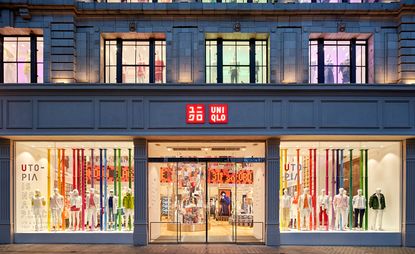
Over the past fifteen years, Uniqlo’s LifeWear has become a stalwart of the British wardrobe representing quality, consistency and technical innovation at a price. Now, with the re-opening of the Japanese fast retailer’s Oxford Street flagship, Uniqlo want to be better engage with our life-styles.
‘This was my first project after I joined, based on the premise that we'd bring LifeWear to life,’ explains president of global creative John C. Jay, who flew in from his Portland, Oregon base for the unveiling. ‘We are completely rethinking our flagship concept right now. This space is meant to be a reflection of London – to embrace the local neighbourhood. It’s more than just selling stuff, it’s giving it meaning and context.’
Upon entering the 311 Oxford Street monolith, what is immediately evident is a new sense of space, light and order. Doubling in size to 2,240 sq m, the brand's London offices have been moved out to Holborn to make way for two additional floors, which includes a kid’s department, new experimental concept space ‘WearHouse’ and a rooftop terrace that overlooks Oxford Circus – designed as a meeting space for industry and customer events alike.
Regular retail collaborator Wonderwall – the Tokyo-based architectural firm helmed by Masamichi Katayama – have been charged with the facelift, reworking the store's window and entry displays for better traffic flow and improved natural light. The building’s single-person escalators have been relocated to the middle of the building, while ticker tape digital screens – borrowed from the Ginza flagship – reinforce the brand's digital commitment at every turn.
On the third floor the WearHouse is all exposed brick, distressed floorboards and iron balustrades, just like you'd find in a converted Shoreditch flat. It's a bold departure from the grouped product displays downstairs. Here, under a huge skylight, the brand has curated its clothing offering into characters rather than product styles. Bikes, vintage books and other knickknacks assist in defining the lifestyle of these personalities. Vintage pictures of London and Tokyo are framed and intermixed together on a nearby wall. ‘This is something that started in Tokyo where we literally take space out of the store to promote local retailers, so that we are better citizens of the local culture. In London we want to take that to another level.’
Walking over to a couple of large display tables he adds, ‘our local cultural ambassadors have also curated their favourite things in life that they can’t live without.’ The curious essentials from filmmaker Sean Frank, designer Hana Tajima and photographer Cate Underwood range from Vaseline to Polaroid cameras and are also all for sale. ‘They have made a statement about their lives here,’ adds Jay, who spends a third of his in Tokyo, a third in Portland, and the other travelling the globe. ‘We’re going to start by proving that we can be good citizens of our neighbourhood in London, but in the future the same ideas will be coming from other parts of the world.’
However, bricks and mortar are just the start of this conversation. ‘A flagship store is both virtual and analogue,’ he continues, ‘that shopping experience should be united. You can now order at home at night and you can come and pick it up here in the morning.’ It’s a service born from Jay’s own frustration at missing more couriers than he collects. The brand is also working towards a delivery network that would see product on customer doorsteps within a 3-hour window.
Taking a seat on a distressed leather club chair in the WearHouse he adds, ‘We wanted to do this in London first because we came with our eyes very wide open in 2001.’ (The retailer opened 20 stores across Britain and had to close every one due to a lack of brand understanding.) ‘It wasn’t always easy, but we’ve learned a lot in America, and the great thing about Mr Yanai (Uniqlo’s founder and president) and the DNA of this company is that it’s fearless. It just tries stuff and if it works we just keep evolving it. We’re not afraid to try new things.’

President of global creative John C. Jay explains, ‘This was my first project after I joined, based on the premise that we’d bring LifeWear to life’
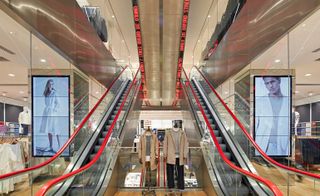
Jay continues, ’This space is meant to be a refection of London – to embrace the local neighbourhood. It’s more than just selling stuff, it’s giving it meaning and context’
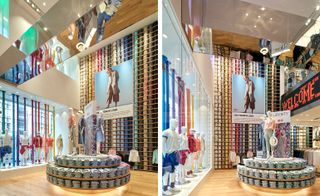
Upon entering the 311 Oxford Street monolith, what is immediately evident is the new sense of space, light and order
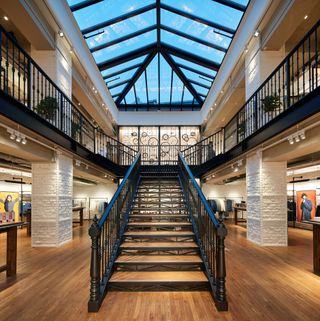
Doubling in size to 2,240 sq m, the brand’s London offices have been moved out to Holborn to make way for two additional floors. Pictured is the new WearHouse concept space, which leads to the rooftop event terrace

Jay concludes, ’the great thing about Mr Yanai (Uniqlo’s founder and president) and the DNA of this company is that it’s fearless. It just tries stuff and if it works we just keep evolving it’
INFORMATION
For more information, visit the Uniqlo website and Wonder Wall website
Photography: © Hufton + Crow
Wallpaper* Newsletter
Receive our daily digest of inspiration, escapism and design stories from around the world direct to your inbox
-
 Berlinde De Bruyckere’s angels without faces touch down in Venice church
Berlinde De Bruyckere’s angels without faces touch down in Venice churchBelgian artist Berlinde De Bruyckere’s recent archangel sculptures occupy the 16th-century white marble Abbazia di San Giorgio Maggiore for the Venice Biennale 2024
By Osman Can Yerebakan Published
-
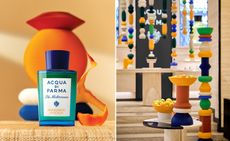 Discover Acqua di Parma’s new Mandarino di Sicilia fragrance at Milan Design Week 2024
Discover Acqua di Parma’s new Mandarino di Sicilia fragrance at Milan Design Week 2024Acqua di Parma and Fornice Objects bring the splendour of Sicilian mandarin fields to Milan to celebrate new fragrance Mandarino di Sicilia
By Simon Mills Published
-
 First look at Samba Room, London’s innovative cocktail lounge packed with Brazilian energy
First look at Samba Room, London’s innovative cocktail lounge packed with Brazilian energyLondon’s Samba Room, an extension of SushiSamba, is a dynamic bar, lounge and private dining space designed by Fabled Studio
By Tianna Williams Published